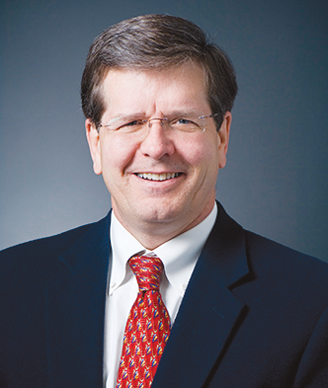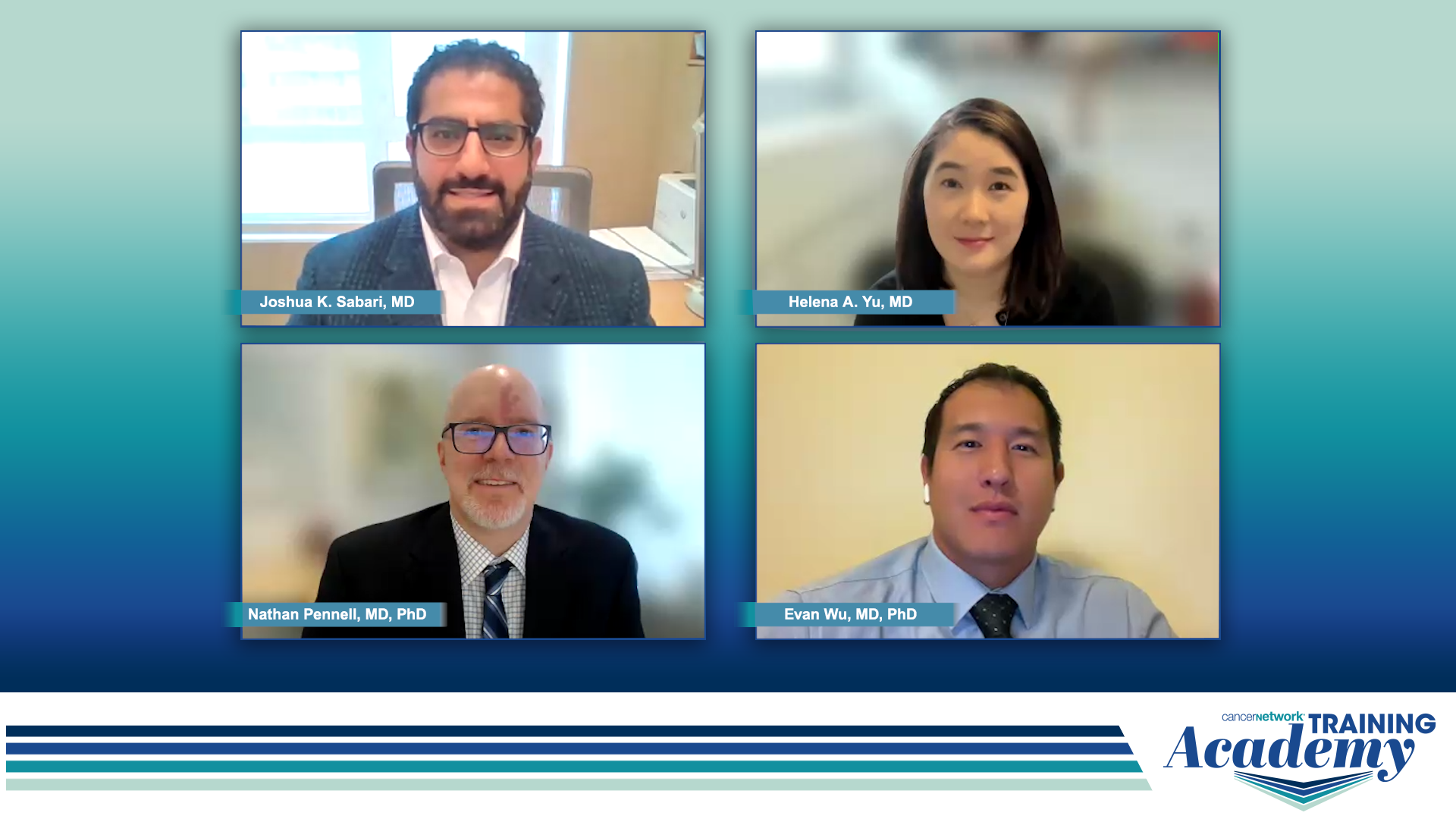Tobacco Control Since the 1964 Surgeon General's Report: Reflecting Back and Looking Forward
We now have more tools than ever in the fight against tobacco-related death and disability, but unfortunately, there is not equal access to resources for smoking cessation, early lung cancer diagnosis, and treatment.
James L. Mulshine, MD

Cheryl Healton, DrPH

The release of the 2014 US Surgeon General’s Report on health consequences of smoking expands awareness about the harms of smoking while documenting the many gains made in the fight against tobacco-related disease.[1] In the 5 decades since the Surgeon General’s January 1964 landmark pronouncement on the impact of tobacco on health, the reduction in smoking among the world’s population has averted millions of deaths and continues to do so globally as tobacco-control policies (such as the World Health Organization [WHO] program, MPOWER) are implemented.[2] In addition to reducing tobacco morbidity and mortality, population-level tobacco cessation has also massively reduced potential healthcare expenses, while preserving the economic productivity of those who quit smoking in response to the Surgeon General’s report and/or the societal norm changes and policy initiatives accelerated by the report’s release and other forces.
Key Strategies That Have Been Implemented in Tobacco Control
Key strategies underpinning the subsequent success of tobacco-control efforts have included increased taxes on tobacco products, which lowered smoking rates among both youth and adults. Efforts to restrict smoking in areas where nonsmokers would be involuntarily exposed to tobacco-combustion products also have had a remarkable public health benefit by protecting nonsmokers while further denormalizing tobacco use and inducing cessation among smokers. In this regard, the work of the Surgeon General’s office was pivotal in effectively alerting the public about the far-reaching adverse health consequences of exposure to second-hand smoke. Passage of clean air laws, which now cover nearly half of the US population,[3] resulted in profound improvements in the air quality of indoor public spaces and workplace settings. Mass public education has succeeded in lowering smoking rates among both youth and adult populations in the US and elsewhere.[4]
Sustained efforts over the past 50 years by many agencies that were galvanized into action by the initial and subsequent Surgeon General’s reports have ultimately led to tens of millions of smokers permanently ceasing their tobacco use and potential smokers never starting to smoke. These are critical public health accomplishments in overcoming the morbidity, mortality, and economic costs of tobacco-induced diseases.
New Opportunities in Tobacco Cessation and Control
Looking forward on this historic anniversary of the 1964 Surgeon General’s report, what new measures can and should be applied now to accelerate progress in the public health battle to reduce tobacco-related diseases and their associated death rates? What policies can be implemented and actions undertaken to remove the disparities in quit rates, lung cancer detection, and access to treatment that make some smokers more likely to continue smoking and experience a disproportionate burden of tobacco-related disease?
This is a timely challenge in light of the ongoing tension between two antagonistic trends: efforts to reduce overall healthcare expenditures are underway at the same time that the total number of lung cancer cases is increasing. The increased number of lung cancer cases is occurring at a time when the overall rate of lung cancer is generally decreasing, but this paradoxical situation is due to the bulge of aging baby boomers as well as to less favorable cessation outcomes among minorities.[5,6] The net result of these factors is the continued increase in the cost of lung cancer care. This creates an imperative to work toward implementing efficient and economical CT-based lung cancer screening, to identify disease much earlier and thereby avoid higher costs of care such as those associated with end-stage lung cancer. This is an important public health measure for former smokers, since it has been convincingly demonstrated that the risk of lung cancer continues even after successful lifelong cessation.[5] Wide-scale smoking cessation has resulted in positive public health outcomes with regard to reversible tobacco injury; for example, the cardiovascular risk for former smokers declines in the years following cessation to a level approaching that of nonsmokers.[7] However, with 45 million former smokers in the US alone, the carcinogenic risk associated with tobacco exposure persists.[8]As a result, lung cancer is currently the most frequent cause of tobacco-related death.[9]
USPSTF lung cancer screening recommendations
In December 2013, the United States Preventive Services Task Force (USPSTF) recommended lung cancer screening annually in at-risk populations (heavy smokers) as an effective tool to reduce lung cancer mortality.[10,11] The USPSTF recommends “annual screening for lung cancer with low-dose computed tomography in adults ages 55 to 80 years who have a 30 pack-year smoking history and currently smoke or have quit within the past 15 years. Screening should be discontinued once a person has not smoked for 15 years or develops a health problem that substantially limits life expectancy or the ability or willingness to have curative lung surgery.” (For more information, visit uspreventiveservicestaskforce.org.)
We believe the USPSTF used too narrow a standard in light of the ongoing risk of lung cancer among those who quit more than 15 years ago, many of whom are healthy enough to undergo surgery for stage I lung cancer treatment. We are particularly concerned about those who have a high pack-year history and a family history of lung cancer. Irrespective of how the USPSTF guidelines unfold in practice over time, there are significant challenges ahead in ensuring that access is maximized and iatrogenic harm minimized through careful evaluation of the diagnostic findings by those best able to evaluate them. Bearing in mind that the service is being implemented nationally, how can the involved processes be further leveraged to expand the net public health benefit of this new, mass-scale lung cancer screening approach? Are there creative ways to fund these efforts that place at least some of the economic burden where it belongs-on the tobacco industry itself, which produces an addictive product that continues to kill half of those who are unable to quit?
As Humphrey and colleagues discuss, the coupling of smoking-cessation advice with lung cancer screening is integral to the lung cancer screening process.[10] However, lung cancer risk will vary among those who are screened, as screening will involve both people who still smoke and those who have quit but nonetheless remain at risk for lung cancer and a relapse to smoking. The usual methods of tobacco cessation should be offered to everyone who is screened who still smokes or is at risk of relapse. The Affordable Care Act requires some tobacco-cessation interventions to be included as a preventive service,[12] which will expand the number of smokers who have access to affordable smoking-cessation services. Since lung cancer risk is continuous, lung cancer screening, now generally performed annually, must be ongoing. An important public health opportunity is presented by this new screening process: the chance to use these recurring screening visits as an opportunity to calibrate the smoking-cessation intervention to the specific characteristics of the persistent or former smoker. The new national screening system will be an opportunity to “personalize” the smoking-cessation intervention, from clinician advice, to web-based support, to supplemental nicotine-replacement therapy, and experimental approaches including emerging therapies. Moreover, the system of mass screening will create a key opportunity to test adaptive designs to rapidly move people trying to quit through a range of therapeutic approaches, including mobile health (mHealth) methods (eg, the WHO mHealth projects for tobacco control: http://www.who.int/tobacco/mhealth/projects/en/). These efforts can increase successful cessation and substantially broaden our knowledge base regarding what works with specific groups of smokers.
Screening efforts should also maximize opportunities to prevent relapse, which is a key element in the management of smoking as a chronic disease. Among those who quit, smoking recidivism is high and must be addressed to maintain the benefits of initial cessation. If prospective medical records are kept on efforts to assist people who smoke and progressive efforts to help them quit, much can be learned about the natural history of cessation among long-term smokers; this may inform innovative efforts to enable many smokers to quit permanently. Also, CT findings can be used in concert with “doctor’s advice” to quit in a potentially powerful combination. In this fashion, early disease detection and smoking-cessation management could be fully integrated. The periodic lung cancer screening visit could become a test bed for developing new and more effective approaches to definitive smoking cessation, a method integrated with specific findings from patients, many of whom will have early signs of emphysema.
Lung cancer screening: opportunities and long-term impact
As lung cancer screening evolves and is disseminated through the population, the frequency of detecting early-stage lung cancer should increase as the frequency of advanced-stage lung cancer decreases, mirroring the stage-shift reported in the recent follow-up study of outcomes of the National Lung Screening Trial (NLST), sponsored by the National Cancer Institute.[2] This would result in many more people being cured of lung cancer, which in turn could potentially mean the development of a much larger advocacy community-not only for reducing lung cancer but also for reducing tobacco-related disease in general. This dynamic represents an opportunity for the lung cancer community and the tobacco-control community to have a much larger voice in advocating for multidimensional tobacco control. Such a unified voice, comprising public health leaders in coalitions with affected patients and care providers, may have a greater impact in generating support for multiple levels of US engagement, from international agreements on tobacco policy to local policies to reduce tobacco use, and expanded access to cessation services. In a few short years, lung cancer deaths worldwide will surpass deaths from acquired immune deficiency syndrome (AIDS), which have been reduced in part as a result of activism to promote research and health-related behavior changes. The additional impact of the lung cancer survivor community-now tragically small but expected to grow with the availability of screening-brings to the policy conversation the intimate involvement of those affected by the morbidity and mortality of smoking in mass numbers. In the short run, costs will increase as a result of lung cancer screening, treatment of significant clinical findings and malignancies, and widened smoking-cessation efforts.[13] Over time, however, cost savings will be realized from the reduced burden of tobacco-related disease that will likely follow from increased smoking cessation, earlier diagnosis, and less disease progression among those treated for early-stage cancer. The long-term costs of continued tobacco consumption include subsequent healthcare costs, lost productivity related to disease, and the fact that smokers induce others in their social networks (especially their children) not only to initiate smoking, but also to relapse from cessation. Helping someone quit is a gift that keeps on giving.
Currently, the profit from tobacco use is privately held, while the costs have public consequences. The courts have come close to ordering the tobacco industry to support screening in the past, but the absence of definitive proof of its efficacy held them back.[14] With the added evidence from the prospective NLST, the evidence base is complete. In New York, the court ruled (in Caronia v Philip Morris USA, Inc, 2013 NY Slip Op. 08372, 2013 WL 6589454) that increased risk of injury was not sufficient cause for requiring tobacco companies to pay for medical monitoring,[15] but other states have recognized medical-monitoring claims.[16] Should the tobacco industry get a “pass” on contributing to the costs of screening those at risk of lung cancer and helping smokers to quit? Clearly it is possible to create a tax scheme that will initiate a national trust to reduce tobacco-related morbidity and mortality. In fact, such a trust could do much to address the sad irony that so little of the funds generated by the 1998 Master Settlement Agreement[17] have actually been used to reduce the burden of the tobacco epidemic on smokers and the healthcare plans treating them. Such an approach could also hasten the initiation of screening worldwide, underwritten by the industry with the associated product liability. Since it is predicted that a billion people will lose their lives due to tobacco products this century, strategies are urgently needed to stem the loss of life.[18] If this perspective can be embraced-providing services to those screened and activating survivors to improved public policies on tobacco control-a more adaptive and sustainable public health approach to lung cancer screening will emerge, because potential benefits will be more broadly understood and promptly capitalized upon in the US and worldwide.[19]
Although much progress has been made since the first Surgeon General’s report on the hazards of smoking was published 50 years ago, tobacco is still responsible for nearly half a million premature deaths in the US and more than 5 million globally each year.[20] We now have more tools than ever in the fight against tobacco-related death and disability, but unfortunately, there is not equal access to resources for smoking cessation, early lung cancer diagnosis, and treatment. Indeed, “geography remains destiny” with respect to clean indoor air and taxes, with some states in the US still lacking in widespread protections for clean air and appropriate pricing of tobacco products. Investing in these tools now, and addressing disparities in access to them, can save countless lives and reduce the economic burden of tobacco in the future.
Financial Disclosure:The authors have no significant financial interest or other relationship with the manufacturers of any products or providers of any service mentioned in this article.
References:
1. US Department of Health and Human Services. The Health Consequences of Smoking-50 Years of Progress: A Report of the Surgeon General, 2014. Available from: http://www.surgeongeneral.gov/library/reports/50-years-of-progress/. Accessed February 14, 2014.
2. Levy TD, Ellis JA, Mays D, Huang A. Smoking-related deaths averted due to three years of policy progress. Bull World Health Organ. 2013;91:509-18.
3. American Nonsmokers’ Rights Foundation. Percent of U.S. state populations covered by 100% smokefree air laws, January 2, 2014. Available from: http://www.no-smoke.org/pdf/percentstatepops.pdf. Accessed February 18, 2014.
4. US Department of Health and Human Services. Preventing tobacco use among youth and young adults: a report of the Surgeon General. Atlanta, GA: US Department of Health and Human Services, Centers for Disease Control and Prevention, National Center for Chronic Disease Prevention and Health Promotion, Office on Smoking and Health. 2012.
5. Smith BD, Smith GL, Hurria A, et al. Future of cancer incidence in the United States: burdens upon an aging, changing nation. J Clin Oncol. 2009; 27:2758-65.
6. Center for Disease Control and Prevention. Lung cancer incidence trends among men and women-United States, 2005–2009. MMWR 2014; 63:1-5. Available from: http://www.cdc.gov/mmwr/preview/mmwrhtml/mm6301a1.htm?s_cid=mm6301a1_w. Accessed February 23, 2014.
7. Critchley JA, Capewell S. Mortality risk reduction associated with smoking cessation in patients with coronary heart disease: a systematic review. JAMA. 2003;290:86–97.
8. Vineis P, Alavanja M, Buffler P, et al. Tobacco and cancer: recent epidemiological evidence. J Natl Cancer Inst. 2004;96:99-106.
9. Centers for Disease Control and Prevention. Smoking-attributable mortality, years of potential life lost, and productivity losses-United States, 2000–2004. MMWR. 2008;57:1226-8. Available from: http://www.cdc.gov/mmwr/pdf/wk/mm5745.pdf. Accessed February 18, 2014.
10. Humphrey LL, Deffebach M, Pappas M, et al. Screening for lung cancer with low-dose computed tomography: a systematic review to update the U.S. Preventive Services Task Force recommendation. Ann Intern Med. 2013;159:411-20. Available from: http://annals.org/article.aspx?articleid=1721248. Accessed February 18, 2014.
11. Moyer VA. Screening for Lung Cancer: U.S. Preventive Services Task Force Recommendation Statement. Ann Intern Med. 2013 Dec 31. [Epub ahead of print]
12. American Lung Association. Tobacco-related provisions of the Affordable Care Act. Available from: http://www.lung.org/stop-smoking/tobacco-control-advocacy/reports-resources/2012/factsheet-tobacco-related-provisions-of-the-aca.pdf. Accessed February 14, 2014.
13. Pyenson B, Sander M, Jiang Y, et al. An actuarial analysis shows that offering
lung cancer screening as an insurance benefit would save lives at relatively low
cost. Health Aff. 2012;31:770-9.
14. Scott v. American Tobacco Co., No. 96-8461, Louisiana District Court. February 19, 1997. Available from: http://legacy-dc.ucsf.edu/tid/ixw03a00;jsessionid=A67B87021A502C4DE92F3A37DD27449E.tobacco03. Accessed February 18, 2014.
15. Riley TE, Kamen G; Herbert Smith Freehills LLP. New York High Court rejects novel cause of action for medical monitoring. Lexology.com. January 10, 2014. Globe Business Publishing, Ltd. Available from: http://www.lexology.com/library/detail.aspx?g=b9a0c2b9-200e-49a1-bc2d-ad69cd15c49b. Accessed February 18, 2014.
16. Handler JI, Rogers WS, Engler FE. A growing number of states recognize medical monitoring claims. BNA Insights. 2010;25(10). Available from: http://www.princelobel.com/assets/attachments/209.PDF. Accessed February 20, 2014.
17. Legacy. About the Master Settlement Agreement. Available from: http://www.legacyforhealth.org/about/our-history/about-the-master-settlementagreement/%28o%29/3571. Accessed February 18, 2014.
18. Jah P. Avoidable global cancer deaths and total deaths from smoking. Nat Rev Cancer. 2009;9:655-64.
19. Lung Cancer Alliance. National framework for excellence in lung cancer screening and continuum of care. Available from: http://www.lungcanceralliance.org/get-information/am-i-at-risk/national-framework-for-lung-screening-excellence.html. Accessed February 19, 2014.
20. World Health Organization. WHO Report on the Global Tobacco Epidemic, 2011. Warning about the dangers of tobacco. Geneva: World Health Organization, 2011. Available from: http://www.who.int/tobacco/global_report/2011/en/. Accessed February 24, 2014.
Newsletter
Stay up to date on recent advances in the multidisciplinary approach to cancer.









